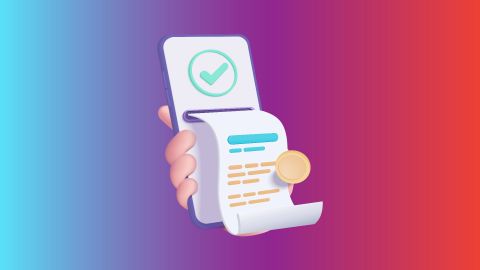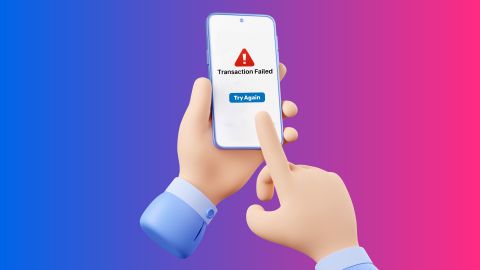Get all the details on Wi-Fi 7, from its revolutionary speed and range to its compatibility with next-gen devices. Learn how this new standard is shaping the future of wireless technology
What is Wifi 7
-
-
Wi-Fi 7, also known as 802.11be, is the latest advancement in wireless networking technology, designed to enhance connectivity for a wide array of devices. Building on the foundations laid by its predecessors, Wi-Fi 6 and Wi-Fi 6E, this new standard promises significant improvements in speed, capacity, and efficiency. With the increasing demand for high-bandwidth applications such as 8K video streaming, augmented reality (AR), and virtual reality (VR), Wi-Fi 7 aims to provide a robust solution to meet these needs.
The development of Wi-Fi 7 is spearheaded by the Institute of Electrical and Electronics Engineers (IEEE) and introduces several innovative features. These include wider channels, improved multi-user capabilities, and enhanced performance in congested environments. As more devices connect to the internet—ranging from smartphones and laptops to smart home devices—the need for a faster and more reliable network becomes paramount. Wi-Fi 7 is poised to address these challenges by offering unprecedented speeds of up to 46 Gbps and reduced latency, making it an essential upgrade for both consumers and businesses alike.
In addition to its technical enhancements, Wi-Fi 7 supports multiple frequency bands—2.4 GHz, 5 GHz, and the newly allocated 6 GHz band—allowing for greater flexibility and reduced interference. This versatility ensures that users can enjoy seamless connectivity even in crowded spaces, paving the way for a more connected future. For those interested in managing their broadband bill payments conveniently while enjoying these new technologies, platforms like Bajaj Pay offer streamlined solutions for various online transactions.Key features of Wi-Fi 7: Speed, range, and efficiency
Wi-Fi 7 introduces several key features that significantly enhance its performance compared to previous generations:- Increased speed: Wi-Fi 7 can achieve maximum speeds of up to 46 Gbps, a substantial upgrade from Wi-Fi 6's maximum of 9.6 Gbps. This increase allows for faster downloads and smoother streaming of high-definition content.
- Wider channels: The introduction of 320 MHz channels enables better utilisation of available bandwidth. This feature allows devices to transmit data more efficiently, reducing congestion in busy networks.
- Multi-link operation: Wi-Fi 7 supports simultaneous connections across different frequency bands (2.4 GHz, 5 GHz, and 6 GHz). This capability enhances throughput and reliability by allowing devices to switch seamlessly between bands based on network conditions.
- Improved multi-user support: With advancements like 8x8 MU-MIMO (Multi-User Multiple Input Multiple Output) technology, Wi-Fi 7 can handle multiple data streams simultaneously without degrading performance. This is particularly beneficial in environments with many connected devices.
- Reduced latency: The enhancements in Wi-Fi 7 lead to lower latency rates, making it ideal for applications requiring real-time interaction such as gaming and video conferencing.
Benefits of Wi-Fi 7 over previous generations (Wi-Fi 6 and Wi-Fi 6E)
Wi-Fi 7 offers several advantages over its predecessors that make it a compelling choice for consumers:- Higher throughput: The maximum throughput of Wi-Fi 7 is significantly higher than that of Wi-Fi 6 or Wi-Fi 6E. This allows users to take full advantage of ultra-fast internet plans without bottlenecks.
- Enhanced capacity: With improved support for multiple devices through technologies like MU-MIMO and OFDMA (Orthogonal Frequency-Division Multiple Access), Wi-Fi 7 can manage more simultaneous connections effectively, which is crucial for smart homes filled with IoT devices.
- Better performance in crowded environments: The ability to operate on the less congested 6 GHz band reduces interference from neighbouring networks. This results in more stable connections even in densely populated areas.
- Future-proofing: As internet usage continues to grow with advancements in streaming services and smart technologies, upgrading to Wi-Fi 7 ensures that users are prepared for future demands without needing frequent hardware updates.
- Support for advanced applications: The capabilities of Wi-Fi 7 are tailored for high-bandwidth applications such as AR/VR experiences and high-definition video streaming, providing smoother performance compared to earlier standards.
Wi-Fi 7 devices: Routers, smartphones, laptops
As the adoption of Wi-Fi 7 grows, various devices are being designed or updated to support this new standard:- Routers: Manufacturers are releasing routers specifically built for Wi-Fi 7 capabilities. These routers leverage the new technologies such as multi-link operation and wider channels to deliver superior performance across all connected devices.
- Smartphones: Leading smartphone brands are incorporating Wi-Fi 7 support into their latest models. This ensures that users can benefit from faster data speeds and improved connectivity wherever they go.
- Laptops: High-performance laptops are also being equipped with Wi-Fi 7 compatibility. This is particularly important for professionals who rely on fast internet connections for tasks like video conferencing or large file transfers.
Wi-Fi 7 supported technologies and standards
Feature Wi-Fi 6/6E Wi-Fi 7 Maximum speed Up to 9.6 Gbps Up to 46 Gbps Channel width Up to 160 MHz Up to 320 MHz Frequency bands 2.4 GHz & 5 GHz 2.4 GHz, 5 GHz & 6 GHz MU-MIMO support Up to 8x8 Up to 16x16 Latency Moderate Significantly reduced Multi-link operation Not supported Supported
This table illustrates how Wi-Fi 7 surpasses previous generations in terms of speed, capacity, and overall network efficiency.How to set up and use Wi-Fi 7 devices
Setting up your new Wi-Fi 7 device is straightforward:- Choose your router: Select a router that supports Wi-Fi 7 features.
- Connect power supply: Plug in your router near your modem or gateway.
- Connect modem: Use an Ethernet cable to connect your modem’s LAN port to the WAN port on your router.
- Power on the router: Switch on your router and wait until it fully boots up (indicated by stable lights).
- Access router settings: Connect your computer or smartphone via Ethernet or existing wireless connection; enter the router’s IP address into a web browser.
- Configure network settings: Set your SSID (network name).
- Connect devices: Use your smartphone or laptop’s settings menu to find your new network name; enter the password you created.
- Test connectivity: Ensure all connected devices can access the internet smoothly; run speed tests if needed.
Wi-Fi 7 Performance and speed testing: Real-world benchmarks
Real-world benchmarks indicate that users can expect significant performance improvements with Wi-Fi 7:
1. In testing environments simulating typical home usage with multiple devices connected simultaneously, speeds have been recorded at up to 40 Gbps, showcasing how well it handles high-demand scenarios like streaming multiple UHD videos while gaming online.
2. Latency tests show reductions down to as low as 1 millisecond, making it ideal for real-time applications such as online gaming or video conferencing where every millisecond counts.
These benchmarks highlight the practical advantages that consumers can experience once they transition to this advanced wireless technology.Wi-Fi 7 adoption timeline: When will it be available for general consumers
The rollout timeline for consumer availability of Wi-Fi 7 is expected as follows:- 2023 - Early adopters: Initial products supporting Wi-Fi 7 began appearing on the market towards the end of this year.
- 2024 - Wider availability: More consumer-grade routers and devices will become widely available throughout this year as manufacturers ramp up production based on demand forecasts.
- 2025 - Mainstream adoption: By this time, it is anticipated that most major device manufacturers will have integrated support for Wi-Fi 7 into their product lines, making it commonplace among consumers.
Challenges in Wi-Fi 7 adoption: Compatibility and cost
Despite its advantages, several challenges may hinder widespread adoption of Wi-Fi 7:- Compatibility issues: Existing devices may not support the new standard without upgrades or replacements. Consumers may need to invest in new hardware which could be costly if they have many older devices.
- Cost considerations: The initial price point for cutting-edge routers supporting Wi-Fi 7 may be higher than current models due to advanced technology features. Consumers must weigh these costs against potential benefits before upgrading.
- Infrastructure limitations: Some areas may lack sufficient infrastructure upgrades necessary for optimal performance with new technology standards; this could limit user experience until improvements are made at local ISP levels.
Wi-Fi 7 in smart homes and future applications
Wi-Fi 7 holds great promise for smart home applications:
1. Its increased bandwidth allows numerous smart devices—like security cameras, smart speakers, thermostats—to operate simultaneously without lagging performance.
2. Enhanced speed supports advanced applications such as real-time video surveillance feeds or seamless integration between AR/VR systems within home environments.
3. Future applications may include automated systems leveraging AI capabilities requiring robust connectivity—such as home assistants coordinating tasks across various smart appliances efficiently utilising available bandwidth optimally through multi-link operation technologies inherent in this new standard.
The integration potential positions homes equipped with this technology at the forefront of innovation moving forward into smarter living spaces tailored around user convenience enhanced by seamless connectivity solutions provided through advanced networking standards like those offered by Wifi seven technologies today!Pricing of Wi-Fi 7 devices: Entry-level vs. premium devices
Wi-Fi 7 devices are expected to enter the Indian market with a diverse pricing structure, catering to both entry-level and premium segments. Entry-level Wi-Fi 7 routers are anticipated to start at around Rs.15,000 to Rs.20,000, making them accessible for average consumers looking for enhanced connectivity without breaking the bank. These models will likely offer essential features suitable for basic internet usage, such as browsing and streaming in moderate quality. On the other hand, premium Wi-Fi 7 devices could range from Rs.30,000 to over Rs.50,000, targeting tech enthusiasts and gamers who require high performance for activities like 4K streaming and online gaming. These devices will boast advanced features such as multi-link operation, higher throughput capabilities, and extensive coverage, ensuring optimal performance in dense environments.Comparison with 5G and other connectivity technologies
Feature Wi-Fi 6/6E Wi-Fi 7 Mobile networks (5G) Maximum speed Up to ~9.6 Gbps Up to ~46 Gbps Up to ~10 Gbps Latency Moderate Low Very low Coverage range Limited Moderate Extensive Device capacity Moderate High High Best use sases Home/office Smart homes/gaming Mobile connectivity
This comparison highlights how each technology serves different needs while showcasing where they excel relative to one another!Steps to pay your broadband bill online on the Bajaj Finserv website
Paying the broadband bill through the Bajaj Finserv website is simple. Here are the steps:1. Visit the Bajaj Finserv website
2. Navigate to ‘ALL PAYMENTS’ under the ‘PAYMENTS’ section and click on it
3. Select the ‘BROADBAND POSTPAID’ option from under ‘BILLS & RECHARGES’
4. A pop-up will request for sign-in, enter your mobile number and click on ‘GET OTP’ to login
5. Select your service provider from the list of broadband companies
6. Enter your ‘CUSTOMER ID’ and click on ‘FETCH YOUR BILL’
7. Verify the bill amount and click on ‘PAY NOW’
8. Pay using the multiple payment methods available such as Bajaj Pay UPI, debit card, credit card, net banking, and Bajaj Pay Wallet.
Post the transaction you will be receiving a confirmation to intimate about successful payment.
Fee and charges
A convenience fee of up to 2% will be charged depending on the transaction amount and payment mode (inclusive of applicable taxes). For more information on fees and charges, click here.
Note: For failed transactions, the total amount including charges except taxes are reversed.
-
Recharge and Pay Bills
Mobile Prepaid
Mobile Postpaid
Broadband Bill Payment
Electricity Bill Payment
Bajaj Finserv App for All Your Financial Needs and Goals
Trusted by 50 million+ customers in India, Bajaj Finserv App is a one-stop solution for all your financial needs and goals.
You can use the Bajaj Finserv App to:
Apply for loans online, such as Instant Personal Loan, Home Loan, Business Loan, Gold Loan, and more.
Explore and apply for co-branded credit cards online.
Invest in fixed deposits and mutual funds on the app.
Choose from multiple insurance for your health, motor and even pocket insurance, from various insurance providers.
Pay and manage your bills and recharges using the BBPS platform. Use Bajaj Pay and Bajaj Wallet for quick and simple money transfers and transactions.
Apply for Insta EMI Card and get a pre-approved limit on the app. Explore over 1 million products on the app that can be purchased from a partner store on Easy EMIs.
Shop from over 100+ brand partners that offer a diverse range of products and services.
Use specialised tools like EMI calculators, SIP Calculators
Check your credit score, download loan statements and even get quick customer support—all on the app.
Download the Bajaj Finserv App today and experience the convenience of managing your finances on one app.
You can use the Bajaj Finserv App to:
Apply for loans online, such as Instant Personal Loan, Home Loan, Business Loan, Gold Loan, and more.
Explore and apply for co-branded credit cards online.
Invest in fixed deposits and mutual funds on the app.
Choose from multiple insurance for your health, motor and even pocket insurance, from various insurance providers.
Pay and manage your bills and recharges using the BBPS platform. Use Bajaj Pay and Bajaj Wallet for quick and simple money transfers and transactions.
Apply for Insta EMI Card and get a pre-approved limit on the app. Explore over 1 million products on the app that can be purchased from a partner store on Easy EMIs.
Shop from over 100+ brand partners that offer a diverse range of products and services.
Use specialised tools like EMI calculators, SIP Calculators
Check your credit score, download loan statements and even get quick customer support—all on the app.
Download the Bajaj Finserv App today and experience the convenience of managing your finances on one app.
Frequently asked questions
How does Wi-Fi 7 compare to 5G?
Wi-Fi 7 offers faster speeds and lower latency for home/office use, while 5G provides extensive coverage for mobile connectivity. Both technologies complement each other.
How does Wi-Fi 7 improve performance in crowded environments?
Wi-Fi 7 operates on less congested frequency bands and uses wider channels and multi-link operations to reduce interference and improve reliability.
What are the key features of Wi-Fi 7?
Key features include wider 320 MHz channels, multi-link operation, support for 2.4 GHz, 5 GHz, and 6 GHz bands, and advanced MU-MIMO technology.
Is Wi-Fi 7 backward-compatible with older devices?
Yes, Wi-Fi 7 routers will support older devices. However, to enjoy Wi-Fi 7’s full benefits, your devices must also support the standard.
Do I need new hardware for Wi-Fi 7?
Yes, you need a Wi-Fi 7-compatible router and devices, such as smartphones, laptops, or smart home gadgets, to utilise its features fully.
Show More
Show Less




